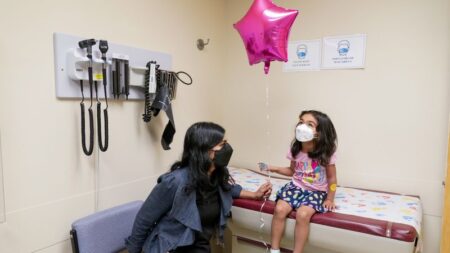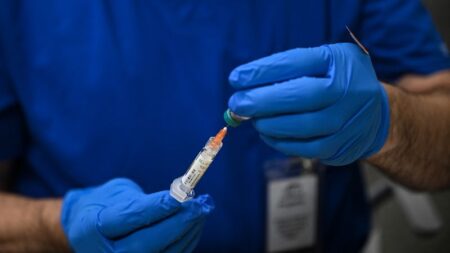This winter, China has witnessed a surge in respiratory infections, a trend that has raised global concerns regarding potential implications for other regions. Among the plethora of viruses responsible for respiratory ailments, human metapneumovirus (HMPV) has emerged as a focal point of interest. HMPV has been known to cause both upper and lower respiratory diseases, affecting individuals across all age brackets. Recent data from the Chinese Centers for Disease Control and Prevention (CDC) indicates a notable uptick in HMPV infections over the recent weeks.
Interestingly, while HMPV is garnering attention, it is crucial to understand that it typically peaks during wintertime in the Northern Hemisphere. Moreover, China’s CDC data highlights that alongside HMPV, other respiratory infections such as seasonal flu and respiratory syncytial virus (RSV) are also on the rise. Margaret Harris, a representative from the World Health Organization (WHO), emphasized during a news conference that the reported levels of respiratory illnesses in China remain within the expected parameters for this season.
Harris futher alleviated fears by indicating that hospital admissions related to respiratory issues in China fall below the levels reported at the same time the previous year, and there have been no emergencies declared in relation to these conditions. Stressing that HMPV is not a newly emerged virus, Harris noted that it has been part of the human population since its identification in 2001 and has been classified as a common virus circulating during the winter and early spring.
In the United States, monitoring of HMPV is conducted in a manner similar to tracking other respiratory pathogens. Current estimates suggest that HMPV accounts for approximately 10% to 12% of respiratory illnesses in children. Most children will contract HMPV before the age of five, with subsequent reinfections possible throughout their lives. Recent data indicates that HMPV infections began to appear more frequently in November and have shown an upward trend; however, when compared to more widespread respiratory viruses, HMPV’s weekly testing percentage remains lower, computed at 1.94% while flu and Covid-19 stood at 18.71% and 7.10%, respectively, by late December.
The respiratory virus season is rife with various pathogens, including HMPV, flu, and RSV, among others. Janet Hamilton, the executive director of the Council of State and Territorial Epidemiologists, pointed out that while severe illness is often associated with COVID-19, flu, and RSV, many other respiratory viruses are also prevalent. For the most part, infections related to HMPV are mild, often resembling symptoms of the common cold, and individuals typically recover without requiring extensive medical intervention. Symptoms frequently associated with HMPV include cough, sneezing, fever, congestion, and shortness of breath.
HMPV is primarily transmitted from person to person through respiratory droplets released during coughing or sneezing and can also be spread by physical contact, such as touching contaminated surfaces. To curb the spread, Harris recommends basic preventive measures. Individuals displaying symptoms should remain at home; in crowded or poorly ventilated settings, masks may offer some protection, and efforts should be made to improve venue airflow.
Certain demographics, particularly newborns and the elderly, are at an increased risk for severe HMPV infections. Harris advises against visiting vulnerable individuals when one has cold-like symptoms. Health care providers can conduct tests for HMPV, but currently, there is no vaccine or singular antiviral treatment for the virus. Management typically involves treating mild symptoms through hydration and rest, aided by over-the-counter medications.
Mild cases of HMPV often only last a few days to a week, with many patients recovering within a span of two to five days. Experts like John Tregoning from Imperial College London have reiterated that those feeling unwell should focus on rest and hydration, as antibiotics will not affect viral infections. If a person’s condition worsens, consulting a healthcare professional is advised. Thus, while HMPV deserves attention, the existing trends indicate a manageable situation during this winter season.












